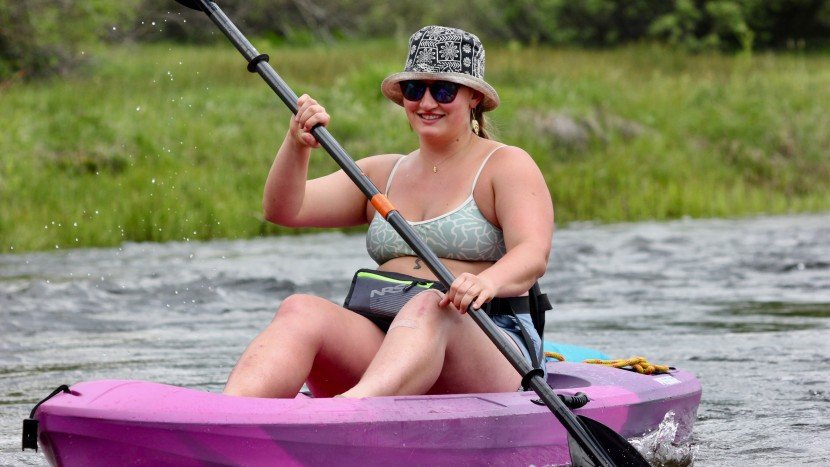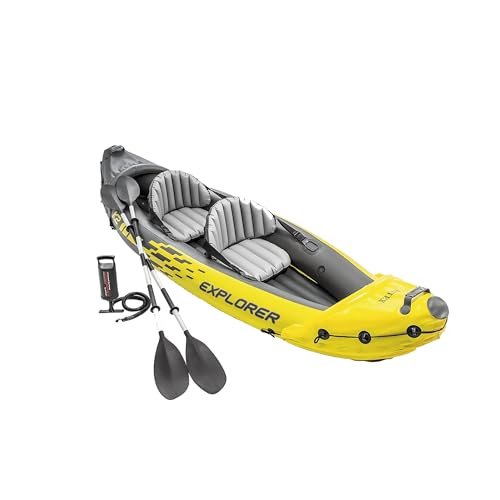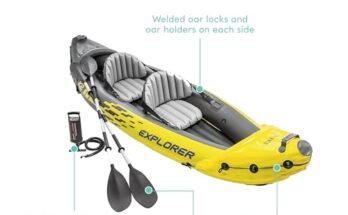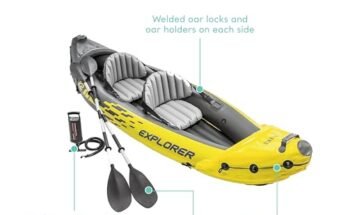Are you ready to find the perfect kayak but feeling overwhelmed by all the options? Choosing the right kayak can make a huge difference in your experience on the water.
Whether you want to relax on calm lakes, tackle fast rivers, or explore the ocean, the kayak you pick should match your style and needs. You’ll discover simple tips to help you choose the kayak that fits you best. By the end, you’ll feel confident and excited to make your purchase.
Let’s dive in and find your ideal kayak!

Types Of Kayaks
Kayaking is a fun and relaxing activity. Choosing the right kayak is important. Different kayaks serve different purposes.
This guide covers five common types of kayaks. Each type fits different water conditions and uses.
Recreational Kayaks
Recreational kayaks are great for beginners. They are stable and easy to use. These kayaks work well on calm waters like lakes and slow rivers.
Touring Kayaks
Touring kayaks are built for long trips. They are narrow and fast. These kayaks track well in open water and can carry extra gear.
Sit-on-top Kayaks
Sit-on-top kayaks have an open design. You sit on top of the kayak, not inside. They are easy to get on and off, and dry quickly.
Inflatable Kayaks
Inflatable kayaks are light and portable. You can deflate them for easy storage. They are good for casual paddling and travel.
- Made from durable materials
- Easy to carry and transport
- Suitable for calm waters
- Less speed than hard-shell kayaks
Fishing Kayaks
Fishing kayaks have special features for anglers. They offer stability and space for gear. Some have mounts for fishing rods and storage compartments.
| Feature | Benefit |
| Rod holders | Keep fishing rods secure |
| Storage space | Store tackle and supplies |
| Stable design | Stand or move easily |
Key Features To Consider
Choosing the right kayak means thinking about several key features. These features affect your comfort, safety, and fun on the water.
Look at size, materials, weight, storage, and seating before making your choice. Each feature suits different needs and water conditions.
Kayak Length And Width
Longer kayaks move faster and track straighter but can be harder to turn. Wider kayaks offer more stability but may be slower.
Choose length and width based on your skill level and the type of water you will paddle in.
Material And Durability
Kayaks come in plastic, fiberglass, and composite materials. Plastic kayaks are tough and low cost. Fiberglass kayaks are lighter but can break more easily. Composite kayaks offer the best performance but cost more.
- Plastic: durable, affordable, heavier
- Fiberglass: lighter, less durable, mid-price
- Composite: lightest, strongest, expensive
Weight And Portability
Consider how you will carry and store your kayak. Lightweight kayaks are easier to move but may cost more. Heavier kayaks are harder to transport but often more stable in water.
| Weight | Portability | Typical Use |
| Under 40 lbs | Easy to carry solo | Recreational, calm waters |
| 40 to 60 lbs | May need two people | Touring, lakes, slow rivers |
| Over 60 lbs | Requires vehicle rack or dolly | Sea kayaking, rough waters |
Storage Options
Look for kayaks with built-in storage like hatches or deck rigs. Storage helps keep your gear dry and secure while you paddle.
Some kayaks have open cockpits for easy access, while others have sealed compartments for long trips.
Seating Comfort
Comfortable seating makes paddling longer trips easier. Look for adjustable seats with good back support and padding.
- Adjustable seat height and angle
- Padded cushions for comfort
- Backrest support for posture
- Foot braces for stability
Skill Level And Usage
Choosing the right kayak depends on your skill level and how you plan to use it. Different kayaks suit beginners, intermediates, and experts.
Your intended water type also affects the best kayak choice. Lakes, rivers, and oceans need different designs.
Beginner-friendly Models
Beginner kayaks are stable and easy to control. They help new paddlers feel safe on the water.
These kayaks are usually wider and have more buoyancy to prevent tipping.
- Wide hull for better balance
- Lightweight for easy transport
- Simple design with fewer features
- Durable material to handle bumps
Intermediate Kayaks
Intermediate kayaks offer more speed and maneuverability. They suit paddlers with some experience.
These kayaks balance stability with performance for different water conditions.
- Narrower hull for faster paddling
- More features like storage compartments
- Good for longer trips and varied waters
- Moderate weight for easier handling
Advanced Kayaks For Experts
Advanced kayaks focus on speed and precision. Experts use them for challenging water and long distances.
They require good paddling skills and offer less stability but more control.
- Very narrow and streamlined hull
- Lightweight materials like carbon fiber
- Specialized features for racing or touring
- Less forgiving for beginners
Kayaks For Different Water Types
Water type affects kayak choice. Calm lakes, rivers, and oceans need different designs.
Matching kayak type to water improves safety and fun.
| Water Type | Recommended Kayak | Key Features |
|---|---|---|
| Calm Lakes | Recreational Kayaks | Wide, stable, easy to use |
| Rivers | Whitewater Kayaks | Durable, maneuverable, short length |
| Oceans | Sea Kayaks | Long, narrow, storage for gear |
| Fishing | Fishing Kayaks | Stable, with rod holders and storage |
Budget And Price Range
Choosing the right kayak depends on your budget. Kayaks come in many price ranges to fit different needs.
Knowing what to expect for each price level helps you pick a kayak that suits your goals and wallet.
Entry-level Kayaks
Entry-level kayaks cost less and are good for beginners. They are simple and easy to use.
These kayaks usually weigh more and have basic features. They are great for casual paddling on calm water.
- Price range: $200 to $500
- Material: Mostly plastic
- Best for short trips and lakes
- Limited storage and accessories
Mid-range Choices
Mid-range kayaks offer better quality and more features. They fit paddlers with some experience.
You get lighter materials, more storage, and better stability. These kayaks work well on different water types.
- Price range: $500 to $1,000
- Materials: Composite or high-grade plastic
- More comfortable seats and accessories
- Good for longer trips and varied water
High-end Performance Kayaks
High-end kayaks cost the most and offer top performance. They suit serious paddlers and experts.
These kayaks are made with lightweight materials and advanced designs. They provide speed and control.
- Price range: $1,000 to $3,000 or more
- Materials: Carbon fiber, Kevlar
- Designed for speed and agility
- Used in racing, touring, and rough water
Cost Vs. Value
Higher price does not always mean better value. Think about how you will use your kayak.
Entry-level kayaks save money but may wear out faster. High-end kayaks last longer but cost more.
- Match kayak features to your needs
- Consider durability and warranty
- Factor in accessories and maintenance
- Balance cost with how often you paddle
Safety And Accessories
Choosing the right kayak means thinking about safety and useful gear. These items keep you safe and make paddling easier.
This guide covers essential safety gear, paddle types, life jackets, and extra accessories for your kayak.
Essential Safety Gear
Safety gear helps prevent accidents and keeps you prepared in emergencies. Every kayaker should carry the right items.
- Whistle or sound signaling device
- Waterproof flashlight or headlamp
- First aid kit
- Bilge pump or sponge to remove water
- Throw rope for rescue
- Map and compass or GPS device
Paddles And Paddle Types
Paddles come in different shapes and sizes. The right paddle improves control and reduces fatigue on the water.
| Paddle Type | Description | Best Use |
| Single Blade | One blade on a long shaft | Traditional kayaking and canoeing |
| Double Blade | Two blades on either end | Most kayaks for faster paddling |
| Adjustable Paddle | Blade angle or length can change | Versatile for different water conditions |
Life Jackets And Personal Flotation Devices
Life jackets, or PFDs, save lives by keeping you afloat. Choose one that fits well and is comfortable to wear.
- Type III PFDs are common for kayaking
- Check for adjustable straps for a snug fit
- Look for lightweight and breathable materials
- Always wear your life jacket on the water
Additional Accessories
Extra accessories add convenience and safety. Pick items based on your paddling style and needs.
- Dry bags to keep gear dry
- Kayak spray skirts to block water
- Safety flag for visibility
- Anchor for stability in currents
- Seat cushions for comfort
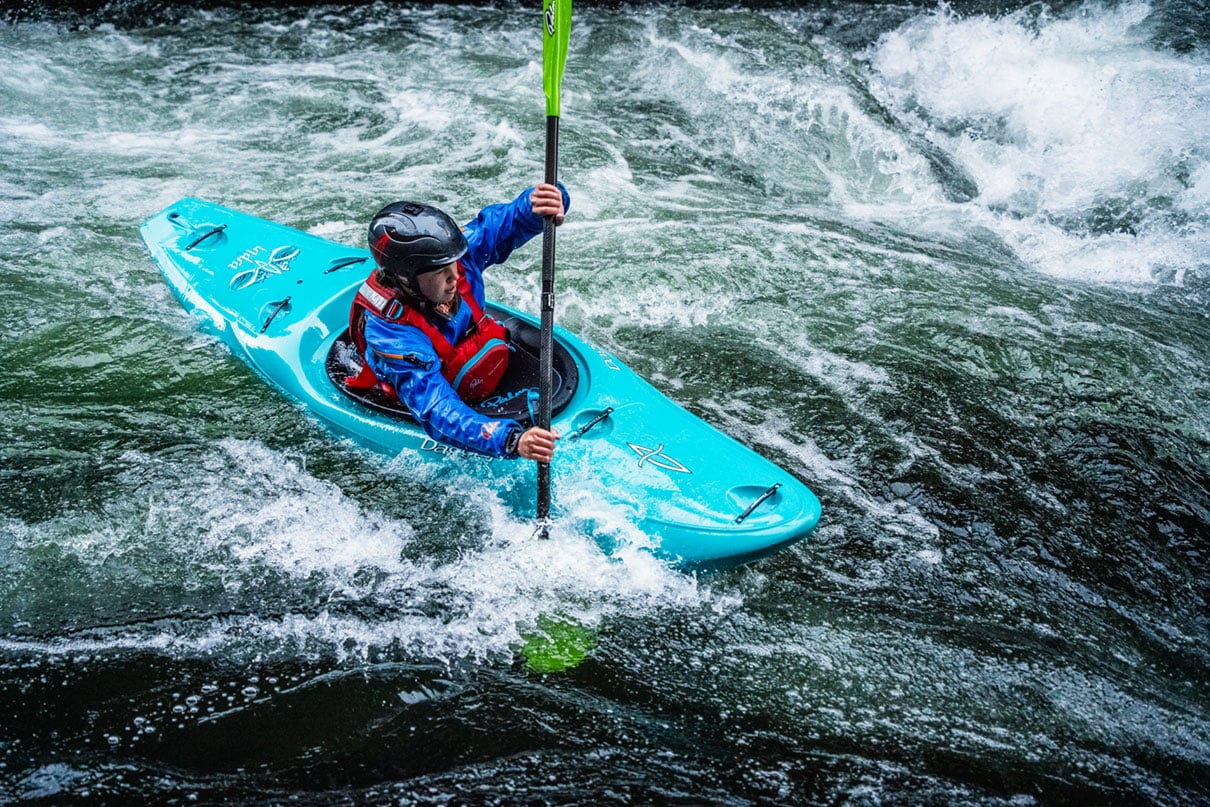
Maintenance And Storage Tips
Keeping your kayak in top shape ensures a great paddling experience. Knowing how to maintain and store it is important. Here are some tips to help you out.
Learn how to clean, store, and repair your kayak with ease. Follow these steps to make your kayak last longer and perform better.
Cleaning And Care
Rinse your kayak with fresh water after each use. This helps remove salt, dirt, and debris. Use a mild soap for a deeper clean.
Dry your kayak before storing it. A dry kayak reduces mold and mildew growth. Use a soft cloth or towel for drying.
- Check for any damage or cracks while cleaning
- Use UV protectant spray to shield from sun damage
- Inspect and clean the cockpit and hatch areas
Proper Storage Methods
Store your kayak indoors if possible. This protects it from the sun and extreme temperatures. If indoors is not an option, use a kayak cover.
Place your kayak on its side or use a rack. This prevents warping or dents. Avoid storing it on the ground directly.
- Hang your kayak using straps or wall mounts
- Keep it away from direct sunlight and moisture
- Ensure good ventilation in the storage area
Repair And Upkeep
Inspect your kayak regularly for any signs of damage. Small cracks and holes can be fixed with a repair kit. Larger repairs may need professional help.
Check the hardware and fittings. Tighten any loose screws or bolts. Replace any worn-out parts to keep your kayak safe.
- Keep a repair kit on hand for quick fixes
- Replace damaged or worn-out paddles
- Check the seat and foot braces for stability
Where To Buy
Choosing the right kayak starts with knowing where to buy it. There are several places to explore when looking for the perfect kayak for your adventures.
Consider your options like local stores, online platforms, or even renting before making a purchase. Each option has its own benefits and drawbacks.
Local Retail Stores
Local retail stores allow you to see the kayak in person. You can check the size, feel the materials, and ask questions directly to the staff.
- Visit local sporting goods stores
- Check for seasonal sales or discounts
- Get personalized advice from in-store experts
Online Marketplaces
Online marketplaces offer a wide variety of kayaks. You can compare prices easily and read reviews from other buyers.
| Website | Features |
| Amazon | Wide selection, user reviews |
| eBay | Auction options, used kayaks |
| Outdoor Retailer | Specialized in outdoor gear |
Used Kayak Options
Buying a used kayak is a budget-friendly option. Check local classifieds or specialized second-hand stores.
Rentals Before Buying
Renting a kayak before purchasing is wise. You can try different models to see what suits you best.
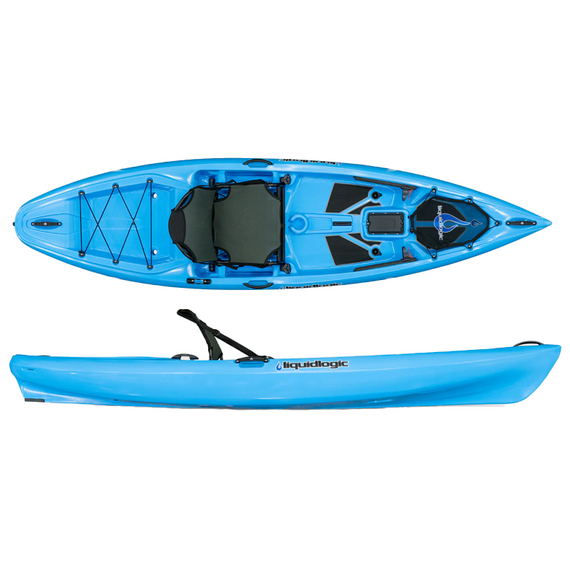
Frequently Asked Questions
What Factors Should I Consider When Buying A Kayak?
Consider your skill level, kayaking style, water type, and budget. Choose between sit-on-top or sit-in kayaks. Check weight capacity and storage space. These factors ensure safety, comfort, and enjoyment on the water.
Which Kayak Type Is Best For Beginners?
Sit-on-top kayaks are best for beginners. They offer stability, easy entry, and low maintenance. These kayaks are ideal for calm lakes and slow rivers. They provide a comfortable and safe experience for new paddlers.
How Do I Choose The Right Kayak Size?
Choose a kayak size based on your height, weight, and gear needs. Longer kayaks track better and move faster. Wider kayaks offer more stability but less speed. Ensure the kayak fits comfortably for better control.
Are Inflatable Kayaks Good For Casual Paddling?
Yes, inflatable kayaks are excellent for casual paddling. They are lightweight, portable, and easy to store. Inflatable kayaks work well on calm waters. They are durable and perfect for beginners and occasional users.
Conclusion
Choosing the right kayak depends on your needs and water type. Think about where you will paddle most often. Consider the kayak’s size, weight, and stability. Sit-on-top kayaks suit warm weather and calm water. Sit-inside kayaks work well in cold or rough conditions.
Don’t forget to check your budget and storage space. Trying a few kayaks before buying helps a lot. Take time to find the best fit for your adventures. Enjoy your time on the water with confidence and fun!
